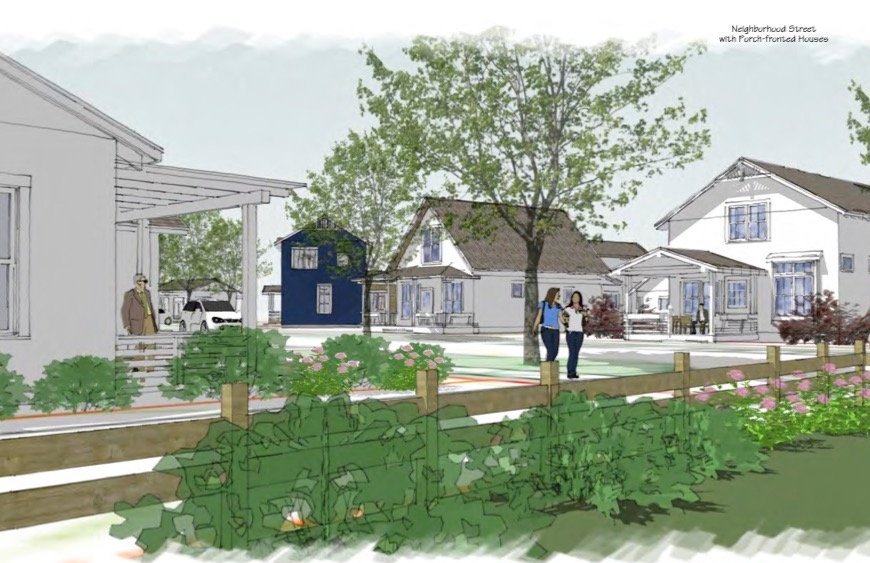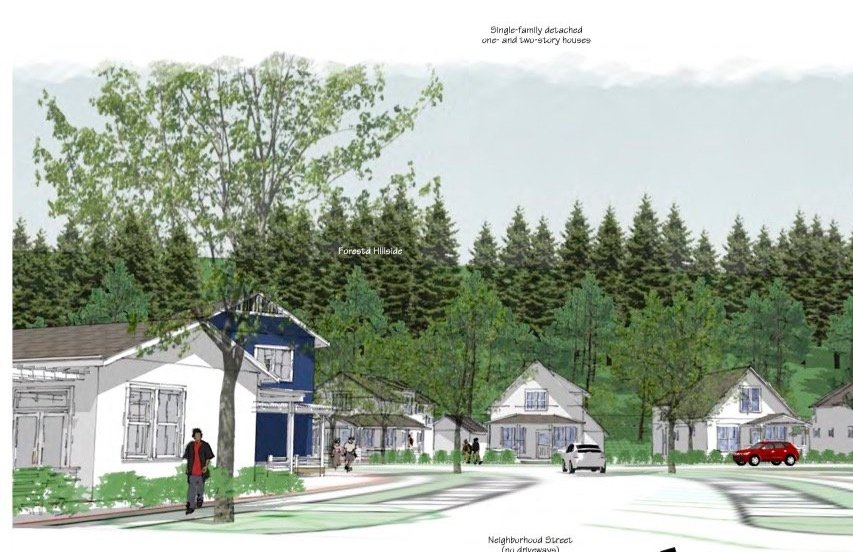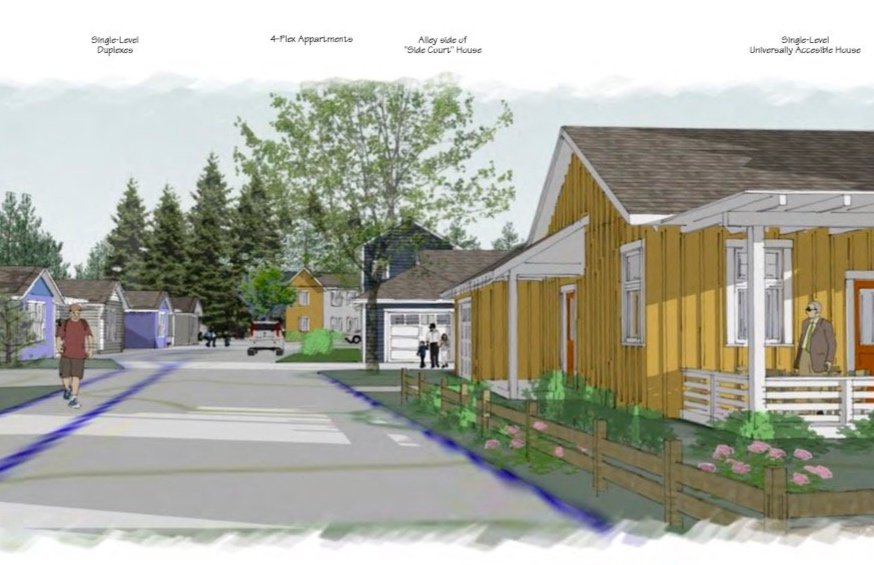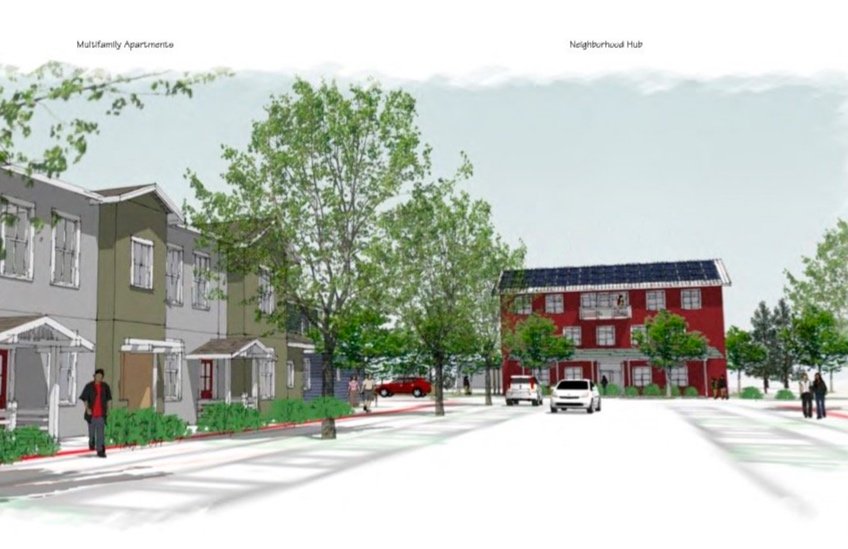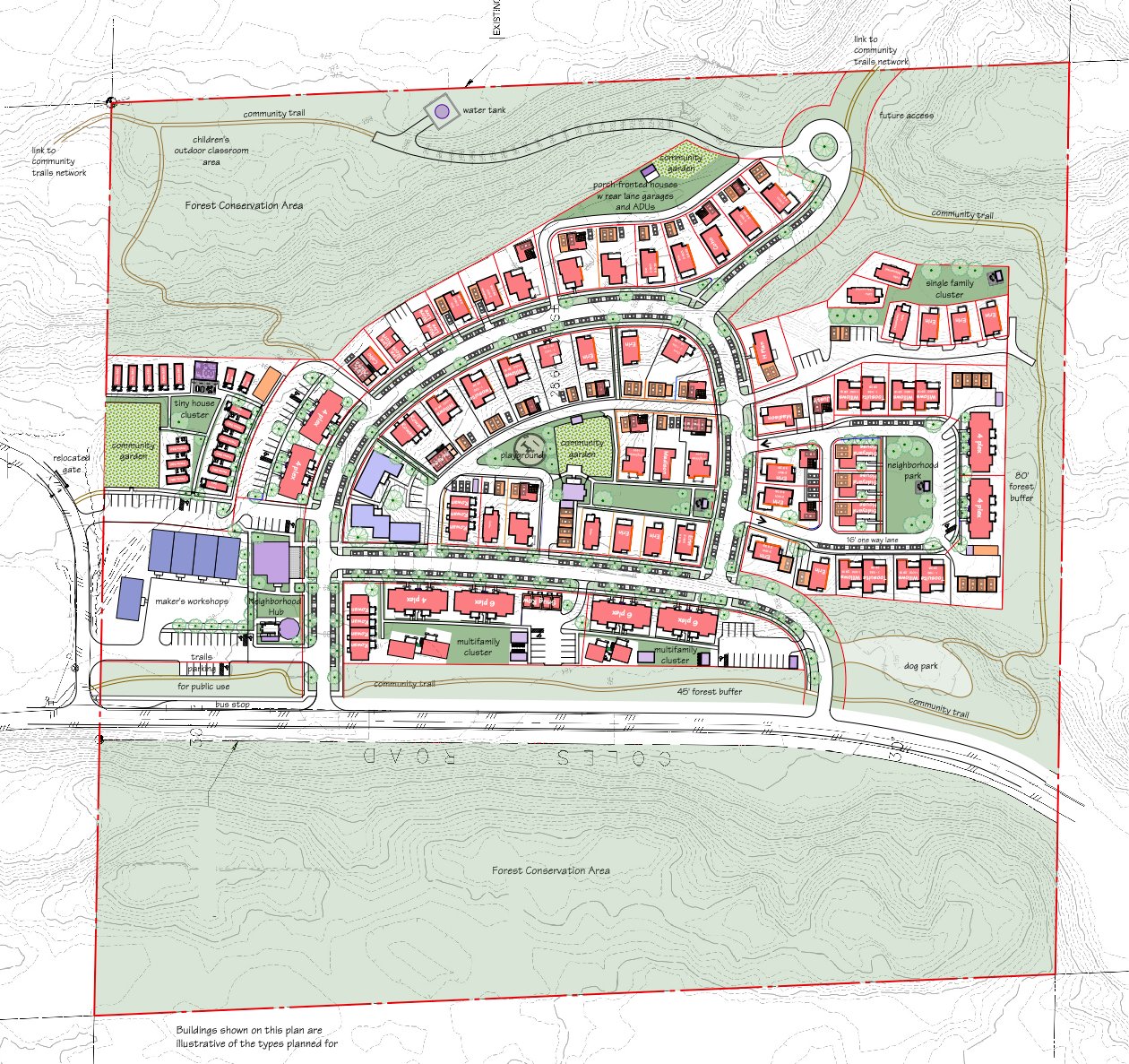Coles Valley Neighborhood
HOW is excited to announce a purchase and sale agreement of a 40-acre property located on the outskirts of Langley. This property is currently in the entitlement application process with the City of Langley, paving the way for the development of a compact, community-centered neighborhood. The plan would allow the construction of 135 homes and accessory dwelling units (ADU’s), as well as a mix of community spaces, workshops, retail establishments, and service facilities. This diverse array of amenities will offer housing options for individuals of mixed incomes and ages, with our goal to maximize the creation of as many permanently affordable homes as possible.
What sets this initiative apart is our commitment to working hand in hand with other organizations on Whidbey Island and local builders. We understand the importance of aligning the development pace with the island's needs, ensuring that the community's interests are at the forefront. Furthermore, we prioritize ecological sensitivity and forest restoration is of utmost concern for us.
By securing this property at the entitlement stage, we eliminate the need to navigate the costly application process, thereby conserving valuable non-profit resources. This strategic move allows us to effectively "land bank" the project, paving the way for collaborative community development over the years and decades to come that is in-line with the community's evolving needs. This stands in stark contrast to the conventional approach of off-island development companies and non-local builders who often opt for large-scale, rapid construction without community involvement and having resources leave the local economy.
Olena Hodges, Executive Artistic Director at Island Shakespeare Festival
“I feel the most hopeful about the housing crisis on the island after learning more about this project.”

Coles Valley Neighborhood is…
-
Our approach to this project is focused on incremental development that can unfold over the longterm in response to needs, support and the economy of the community. By having HOW purchase the property, it ensures that the allowed density of the neighborhood plan will not be “plopped down” all at once by a major off-island developer. Our development approach will be pursued in conjunction with other island organizations and in collaboration with local groups, non-profits, and businesses.
-
The neighborhood is comprised of 7 sub-neighborhoods; the small size of these parcels will more likely allow local builders and developers to engage in the construction, employing local workers and keeping money circulating locally.
-
There will be a mix of market-rate and affordable home options to foster relations between people of varying incomes, household sizes and types, ages, and abilities. Small groups with particular needs will be able to engage in the development process to build aging-in-place homes, supportive homes for people with disabilities, cohousing and other intentional communities.
-
Home On Whidbey will build permanently affordable homes using community land trust (CLT) methods. Other housing partners can create rental opportunities. Together, people in our community will have access to homes across a broad range of incomes.
-
Rather than a residential mono-culture subdivision, this will be a community of homes mixed with community, work, retail, and service uses. There will be spaces for a neighborhood hub, coffeehouse, exercise/dance room, makers’ workshops, small office and business spaces, and a neighborhood preschool.
-
Each sub-neighborhood has a greenspace at its center — an open green, community garden, playground. More than half the property will be forested conservation open space.
-
This neighborhood is pedestrian scaled, with a network of walks and trails connecting it all.
-
The development will utilize bioswale stormwater infiltration, low-water use landscaping, and water-, energy-efficient, and solar technologies.
-
This site is adjacent to Langley’s water treatment facility (the nearest next facility is 25 miles away in Coupeville!), which minimizes infrastructure costs, allows the community to be compact, and is more affordable and ecological.
-
Cooperation and planning at a neighborhood scale facilitates shared amenities such as community gardens, garden & household tools, dog park, forest trails & exercise stations, electric charging stations, shared electric vehicles and cargo bikes, food buying clubs, and workshops.


